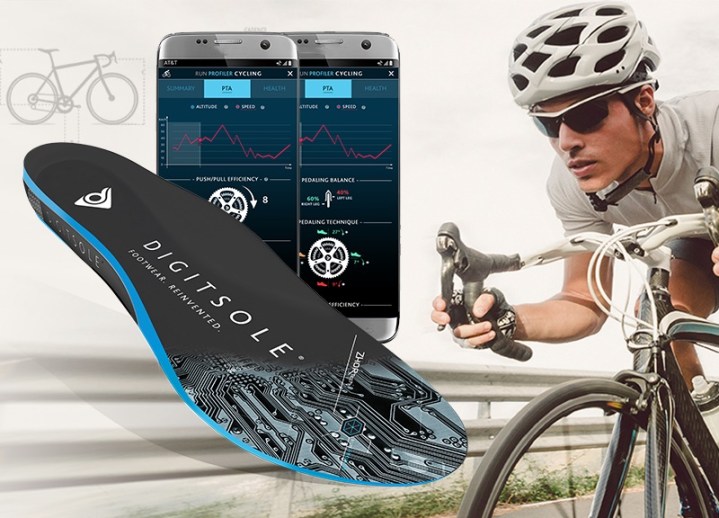
Improving your cycling game doesn’t have to involve buying a new bike or investing in an expensive power meter — instead, you might consider starting from the bottom. This week, Digitsole, the French-based connected footwear technology company, unveiled the world’s first artificial intelligence-powered smart insoles for cycling. Meet the Run Profiler Cycling insoles, a simple insert that cyclists can place in their shoes and use to help better their performance, manage their fatigue levels, and strengthen their muscles. With the insole, they will be able to receive personalized insights into their cycling habits, and just maybe, learn how to kick things up a notch.
“With the launch of these A.I.-Powered Cycling insoles, Digitsole is reinventing footwear in cycling by designing products and solutions at affordable prices that really help people,” Karim Oumnia, CEO of Digitsole, said in a statement. Currently, the executive continued, there is little on the market that can provide cyclists with the breadth and depth of information given by the Run Profiler Cycling insoles. “Cyclists need to spend a huge amount in a laboratory study to get such technical information about this pedaling technique,” she added. But these insoles claim to offer quite a bit of insight at a relatively low price.
First off, the insoles offer pedaling technique analysis (PTA), including pedaling angle, pedaling balance, and push and pull efficiency. Then, there is also the activity tracking component, because why put an additional tracker on your wrist when you can just pull on your favorite pair of cycling shoes? The insoles track your cadence, power gain and loss, elevation, as well as speed. The insoles additionally offer personalized guidelines based on your pedaling and will suggest the ideal seat height, frame height, and length of the handlebar. Thanks to the A.I. component, the insoles can track your fatigue level and alert you to any risk of injury.
As you ride, the connected app will provide audio coaching to guide you through your activity and once you’re ready to cool down, you receive an analytic summary of your activity. Ultimately, these insoles hope to encourage a more efficient pedaling technique, which means achieving more power by exerting less energy. And with A.I. technology, you may just be able to improve your performance, manage your fatigue, and strengthen your muscles.


